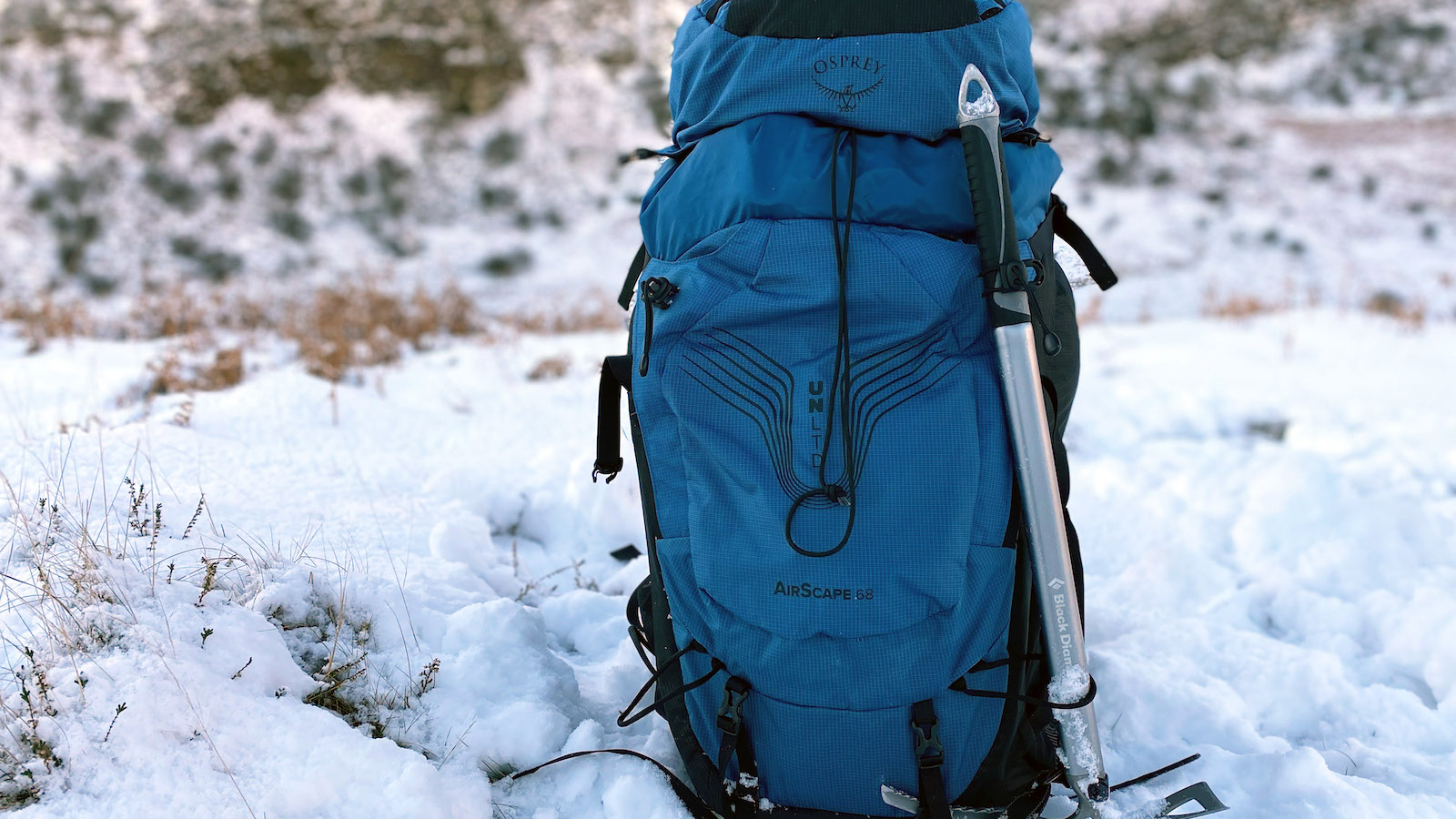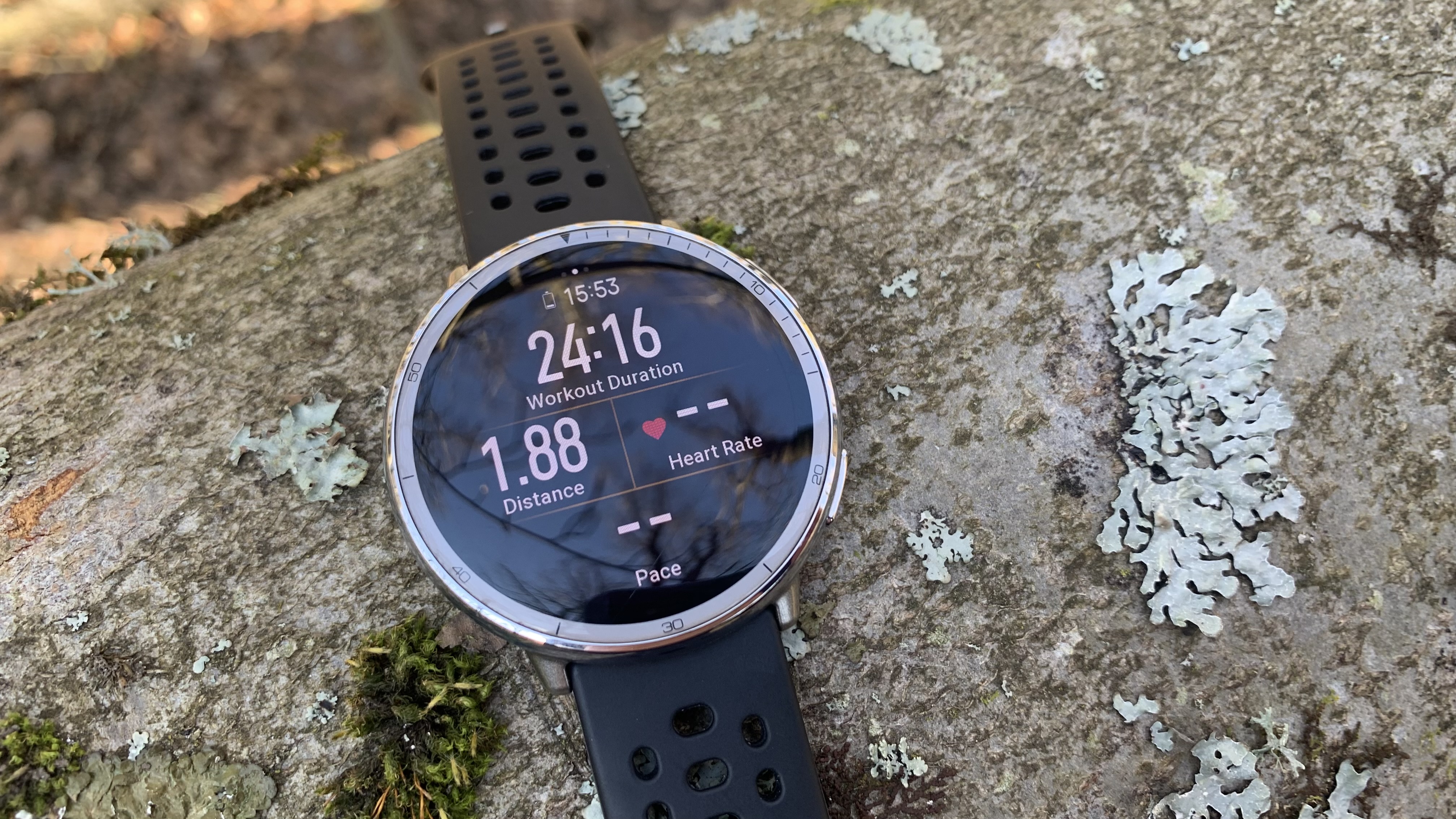Advnture Verdict
Osprey has changed what’s possible in a hiking backpack with the AirScape 68, creating a futuristic product that feels a little out of this world. Despite its ambition, it manages to be highly practical, particularly for longer adventures or wild camping expeditions. Admittedly, it’s expensive, heavier than most and undoubtedly overkill for many hiking applications, a little bit like using a Bugatti for the school run. However, if you’re after a premium pack for the more epic adventures in your life, this dazzling, durable product will delight for a lifetime.
Pros
- +
Staggeringly ambitious
- +
Cutting edge technology and fabrics
- +
Lid converts into an individual daypack
- +
Great storage options
- +
Comfortable for mile after mile
- +
Highly durable
Cons
- -
Heavier than most large backpacks
- -
Eye-watering price
You can trust Advnture
Osprey UNLTD AirScape 68: first impressions
Osprey’s original duo of UNTLD backpacks, the AirScape 68 and AntiGravity 64, arrived in late 2022 with all the pazzazz associated with the launch of a new electric car. Indeed, the world’s leading pack brand has taken a Tesla-esque approach to the development of these cutting-edge packs by going back to the drawing board and considering exactly what’s possible when backpacks are designed with no limitations.
List price: $750 (US) / £650 (UK)
Weight (empty): 3kg / 6.6 lbs
Volume: 68L
Size: 82cm x 40cm x 39cm / 32in x 16in x 15in (S/M); 87cm x 40cm x 39cm / 32in x 16in x 15in (S/M)
Variations available: S/M and L/XL; plus women’s versions
Materials: 210D high tenacity nylon ripstop main fabric treated with DWR; 500D Bluesign approach recycled high tenacity Nylon bottom fabric treated with DWR; polycarbonate framesheet
Colors: Marina Bay Blue (men’s), Hostas Green (women’s)
Compatibility: Wild camping, multi-day hiking, travel
The resulting packs are absolutely dazzling, like products plucked from the future. Osprey says they are the most advanced backpacks in the world, and they're certainly the most ambitious packs I've come across. With the Airscape 68, their innovation team clearly got excited, cramming several forward-thinking ideas into one package.
No limitations means no expense spared and this has obviously had an effect on the cost for the consumer. Both priced at $750 (£650), the AirScape 68 and AntiGravity 64 are the most expensive packs in Osprey’s range.
So, is what’s under bonnet worth the investment? I had the pleasure of heading for the hills with this advanced backpack to find out.
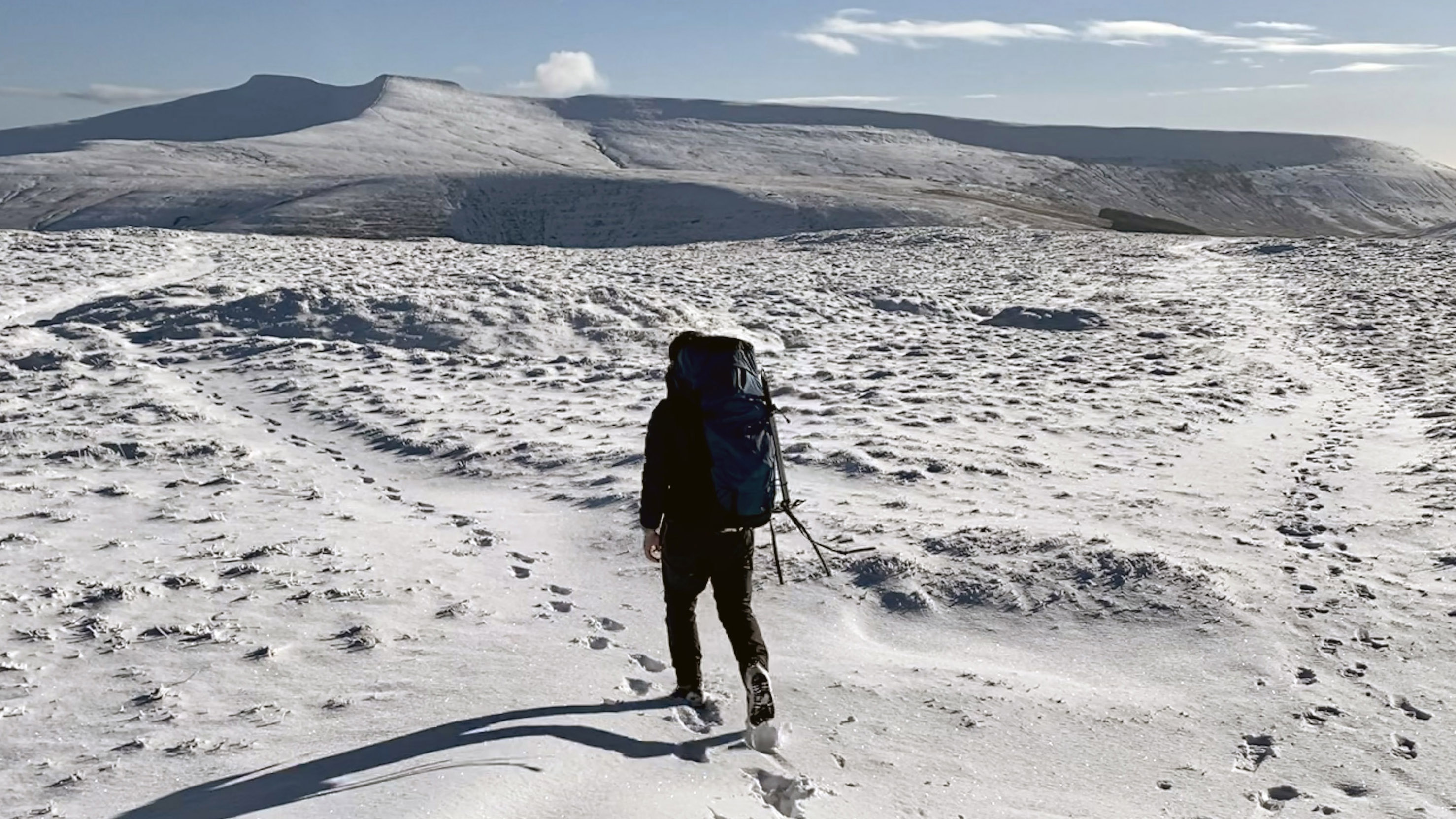
Straight away, it’s clear that this is no ordinary backpack. There are several intriguing features, such as a detachable lid that magically transforms into a separate daypack (yes, you read that right) and the 3D printed lumbar support lattice, which looks particularly futuristic.
Take a step back and the AirScape certainly looks the business, with its electic blue and black color scheme and myriad straps and fastenings. The main 210 denier high tenacity Nylon fabric screams premium quality and durability. The overall impression is of an advanced pack that has all of Osprey’s usual design flair but, on this occassion, taken to the absolute extreme.
Let’s start with the lumbar support panel, which looks nothing like anything I’ve seen before on a backpack. Created using Carbon DLS (Digital Light Synthesis) 3D printing, it’s a squishy and supportive lattice that puts me in mind of a bee’s nest. Initially, I found it quite satisfying to prod and push with my fingers, feeling the varying amounts of give within the panel.
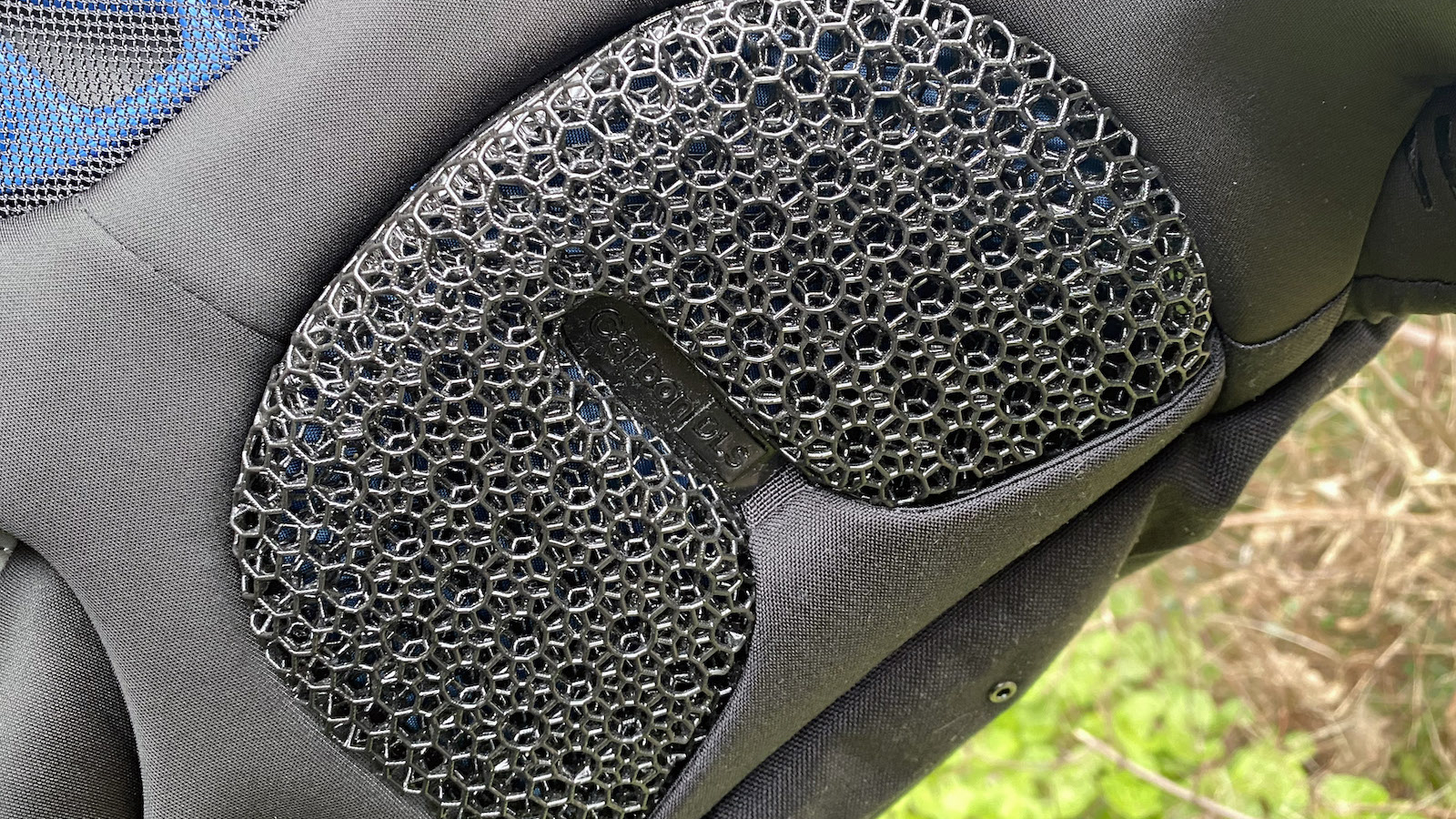
However, it’s not designed to be pushed and prodded but to provide cushioning and support for the lower back, which it certainly achieves. It also grips the wearer, reducing pack movement and chafage. On top of all that, it undoubtedly looks cool too.
Continuing with the theme of space-age back support, there’s the squishy polycarbonate vacuum-formed framesheet backpanel, which features several air channels behind a breathable mesh. This provides supreme comfort and plenty of airflow, working in tandem with the strong, high carbon stainless steel wire frame to provide optimum support when carrying heavy loads.
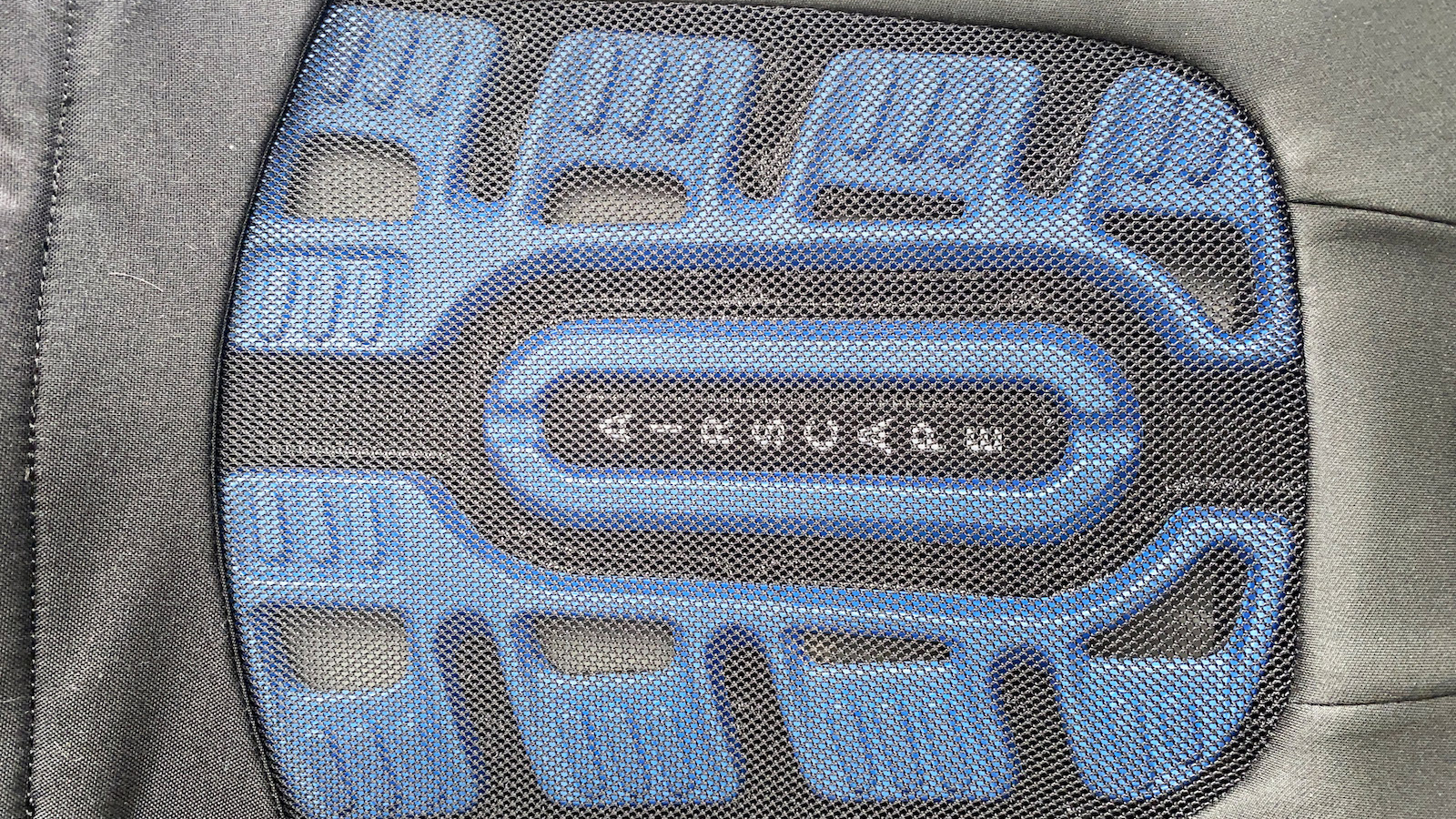
The harness systems works in ways we’ve never seen before too, with an AutoLift System that adjusts the position of the pack when you tighten the harness, meaning you don’t feel the load bearing down on you as with other packs. Once I had everything cinched just right, the pack was a pleasure to carry.
One of the many USPs the AirScape boasts is the way the top lid converts into an 18-liter daypack. As a child, I was a big fan of the Transformers cartoons, which have since gone on to enjoy success on the big screen. I always liked the Transformers that connected together to create a massive, more formidable adversary. Well, the detachable lid-cum-daypack is exactly like this, connecting to its master (the main backpack) or separating to become an effective individual unit. Robots in disguise? No, this is daypacks in disguise.
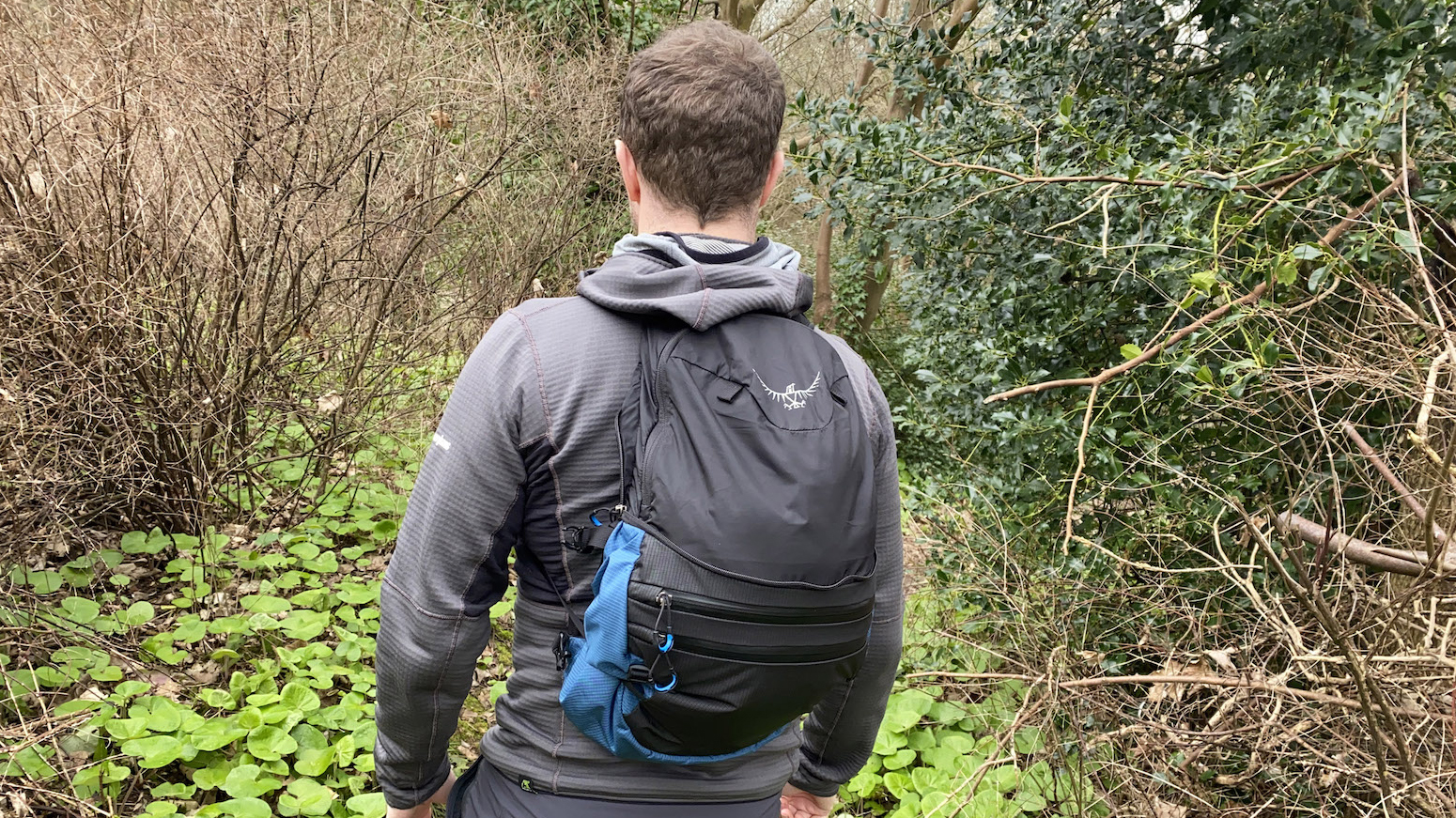
After unclipping the lid, unzipping the right compartment, turning it inside out, pulling out the straps and threading them into place, I had myself a perfectly workable daypack. It’s obviously not as fully-featured a dedicated daypack you’d buy separately, yet there’s surprising functionality here considering it will probably spend most of its life as a lid.
There are two zippered access points to the main compartment, one at the top and one in the middle; a large pouch for a hydration bladder with an attachment buckle; and what was once the lid pocket on the main pack is now a decent sized pocket on the front of the daypack. There’s even a hidden gear loop you can pull out.
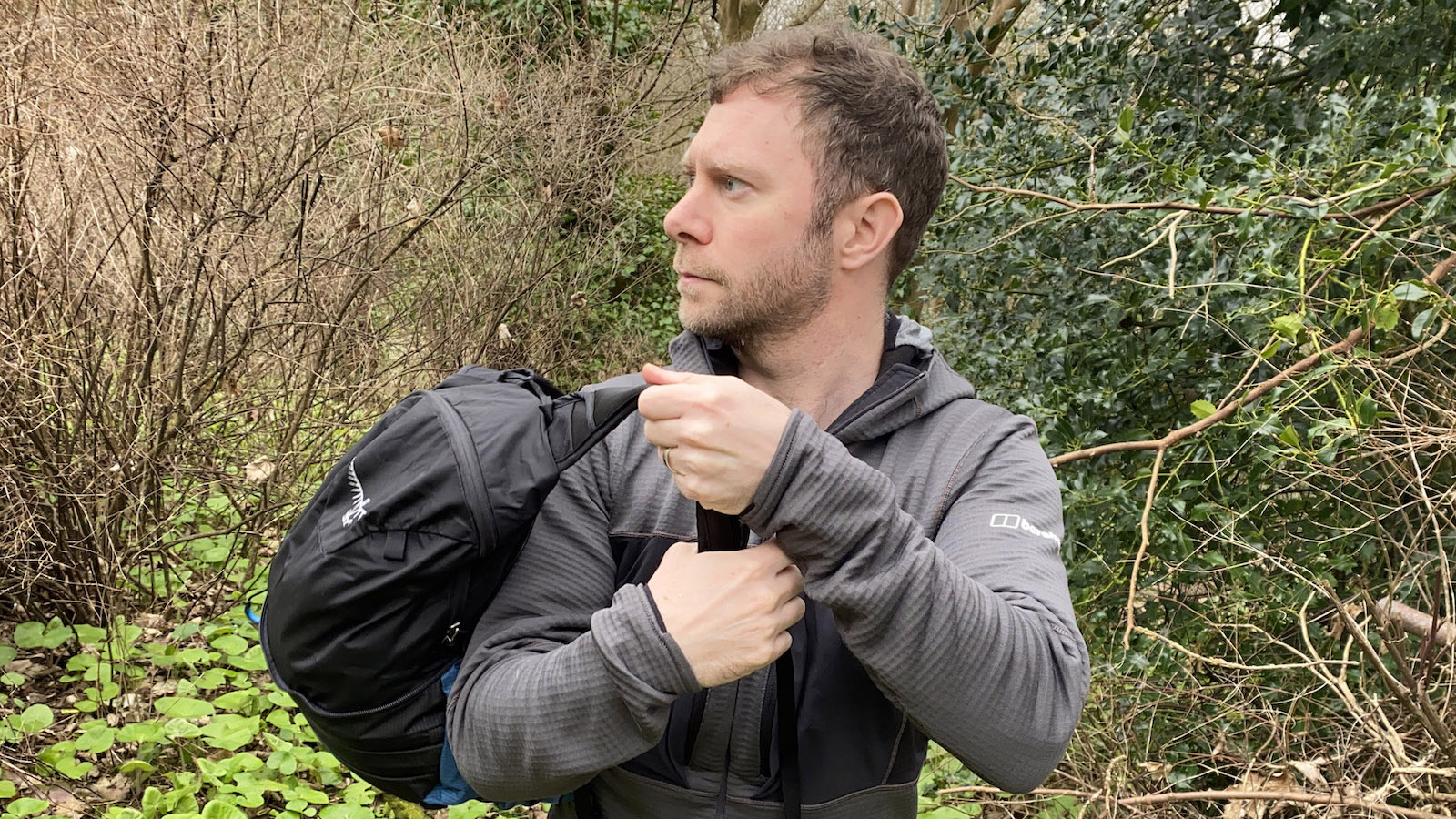
I found this innovation very useful on wild camping expeditions, as the main pack allowed me to haul my camping gear to a suitable base camp, before detaching the daypack and setting off to bag summits.
Back to the main pack, then. All the innovations in the world would be in vain if the storage options weren’t up to scratch. Fortunately, the AirScape has more solutions here than you can shake a Nordic trekking pole at.
The main compartment is accessed through a drawcord opening at the top and from a huge, zippered loop on the front, ideal for quick access to gear when arriving at a wild camping spot. Crucially, I was also able access the pack from the bottom, where there’s a compression wrap for clever sleeping bag storage. I also love the inclusion of the Leave No Trace principles on the inside of the main compartment.
As expected from an Osprey pack, there’s a separate zippered sleeve for hydration bladder storage, complete with attachment. There’s also the usual raincover compartment at the bottom of the pack. Two more decent-sized zippered compartments are found on the front of the pack, while one of the hipbelt pockets has a zippered compartment too. In short, there’s no lack of places to stow stuff and if, like me, you’re the kind of hiker who likes to have systems for where everything is, you’ll enjoy the options offered here.
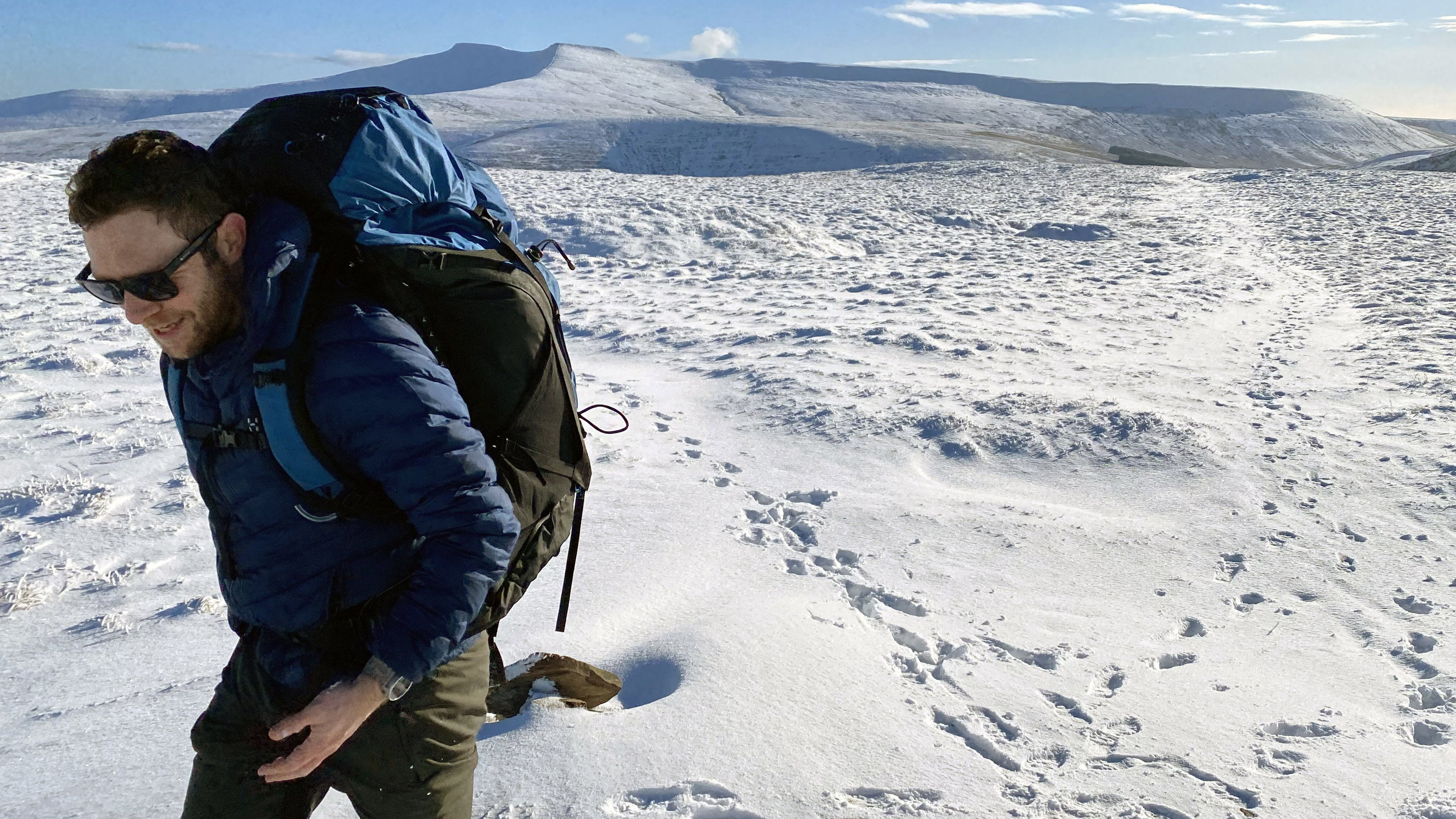
In terms of exterior storage, there’s plenty of elasticated mesh on either side for on-the-go stashing, while hidden loops pop out from a niche in the main body and work with elasticated toggles to hold ice axes in place. There are also ski carry loops on the waist belt and attachments for trekking poles.
Upon purchase, there’s a custom transit cover tucked away in the lid. What’s a custom transit cover, I hear you ask? Well, it’s a sort of kit bag for transporting the Airscape 68 or for storing it at home. It features a single shoulder strap, a zippered pocket in the top and is waterproof too.
On the trails
I’ve been using the AirScape for the best part of a year now and it’s my go-to for wild camping adventures. It served me just as well on long hikes in the depths of the freezing winter as it did on summery camping trips. In terms of durability, I've got absolutely no complaints so far – it might as well be as good as new.
During the colder hikes, the pack was easy to manipulate with gloved hands thanks to its sizeable, dual-injected zip pulls and its ample grab handles. The hip belt pocket was handy for storing items I wanted to hand, like energy gels or my headlamp.
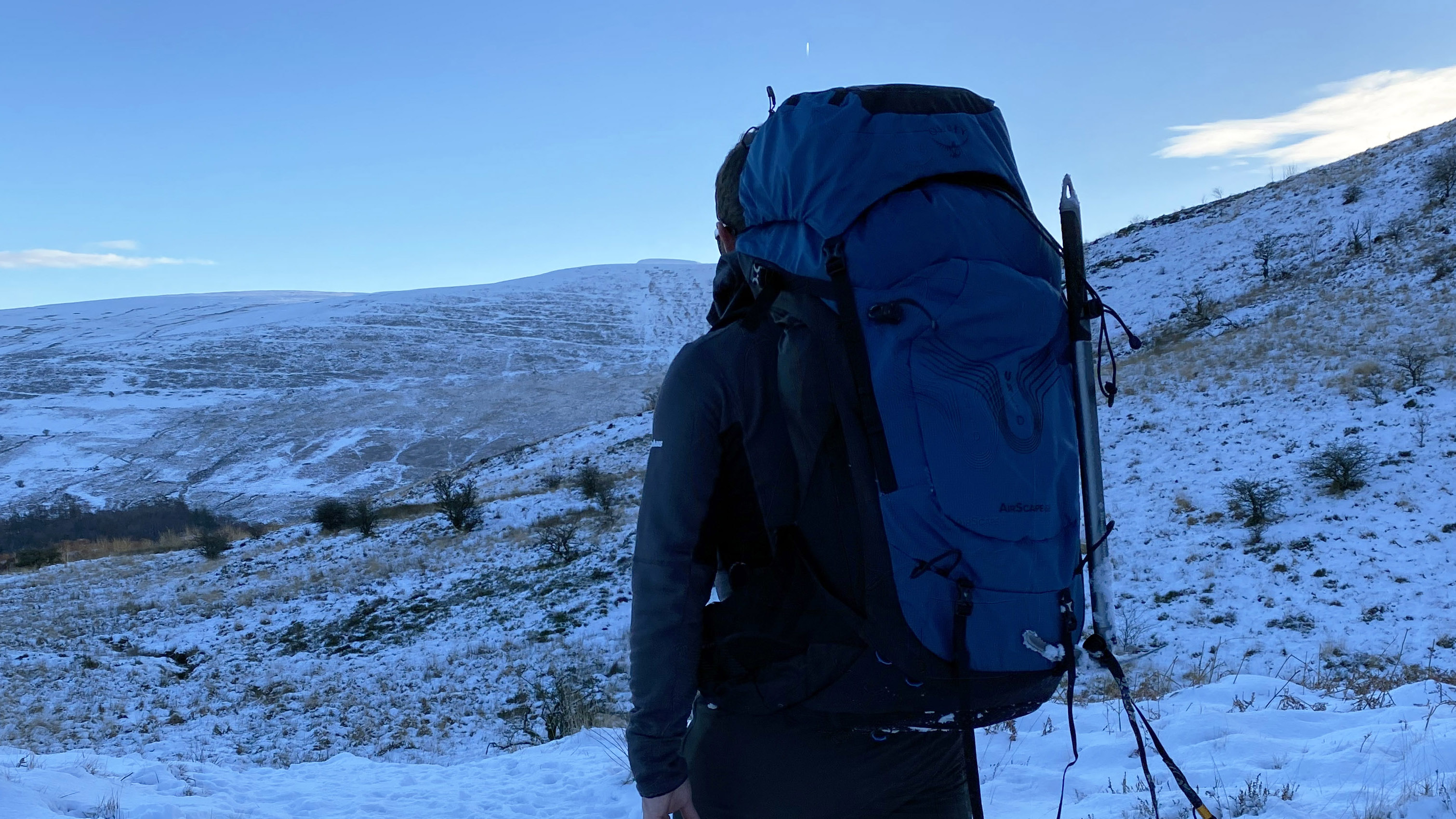
With the padded harness, 3D-printed lumbar support and Airscape back panel, Osprey have gone to obsessive lengths to make this pack comfortable to carry, despite its weight. It feels big and burly to wear, yet it’s also wonderfully supportive and comfortable, ideal for expedition use. The lumbar support really does minimize movement, which makes carrying heavy loads a more pleasant experience than usual.
With so much going on, it takes a little longer to get in tune with than most packs. However, once everything was tensioned correctly and I’d tailored the harness to my requirements, it was a pleasure to wear. Despite all the bells and whistles, it’s got plenty in common with other modern Osprey packs. It’s got the same integrated emergency whistle on the chest strap and twin ice axe or pole attachments make it supremely versatile.
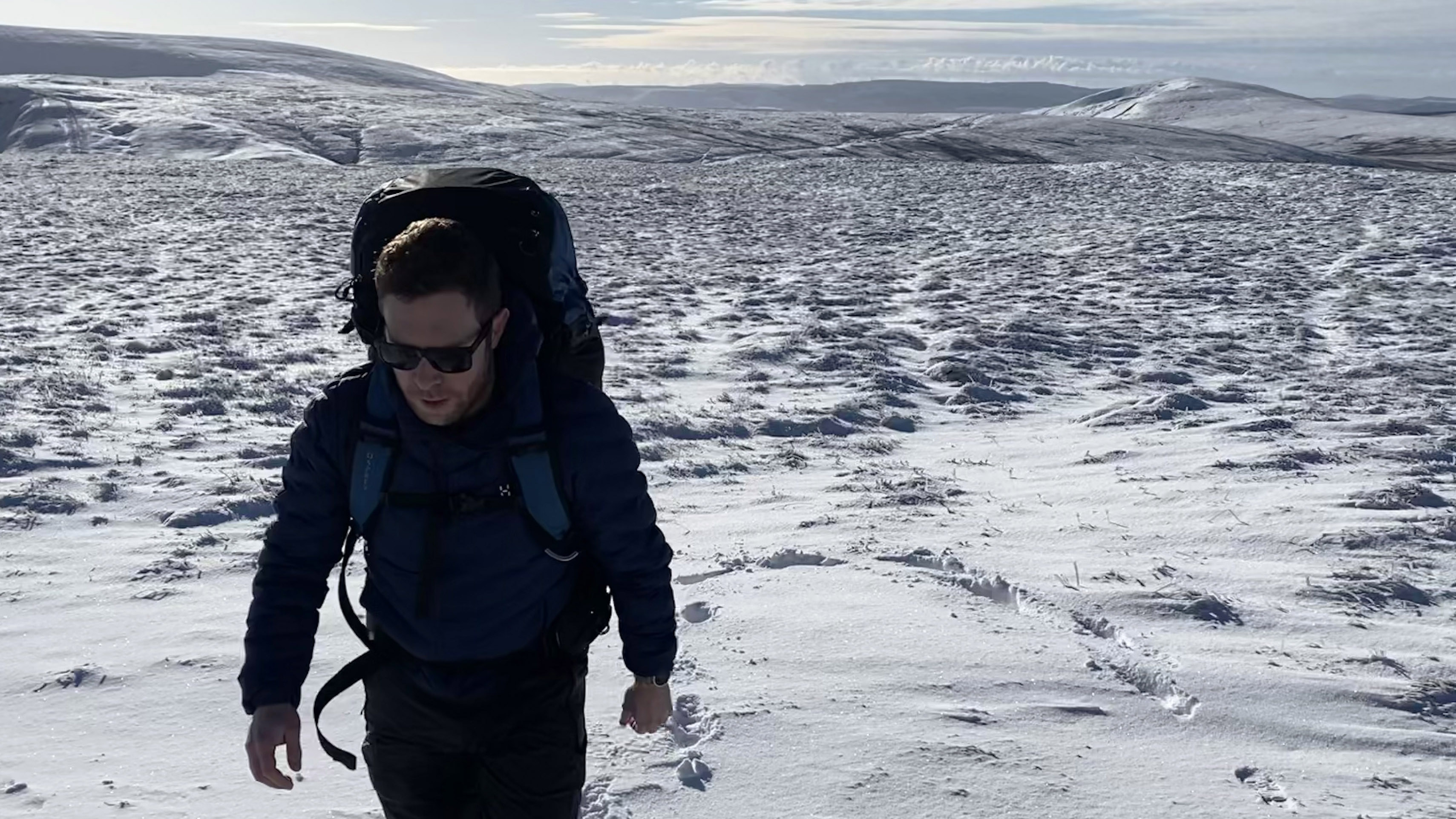
The full AirScape package weighs in at a not inconsiderable 3kg (6.6lbs), which is very heavy for any kind of backpack. However, this includes the custom transit cover, which can be jettisoned straight away, while I’d also ditch the raincover and opt for internal dry bags instead.
This brings the weight down to a more amenable, 2.6kg (5.7lbs), while you could also lose the lid-cum-daypack if you really wanted to, which brings it down to 2.25kg (5lbs). Either way, it’s still a pretty hefty pack. However, this is countered by the support and comfort its excellent design and useful innovations provide, so it never felt like I was lugging quite as much stuff as I often was.
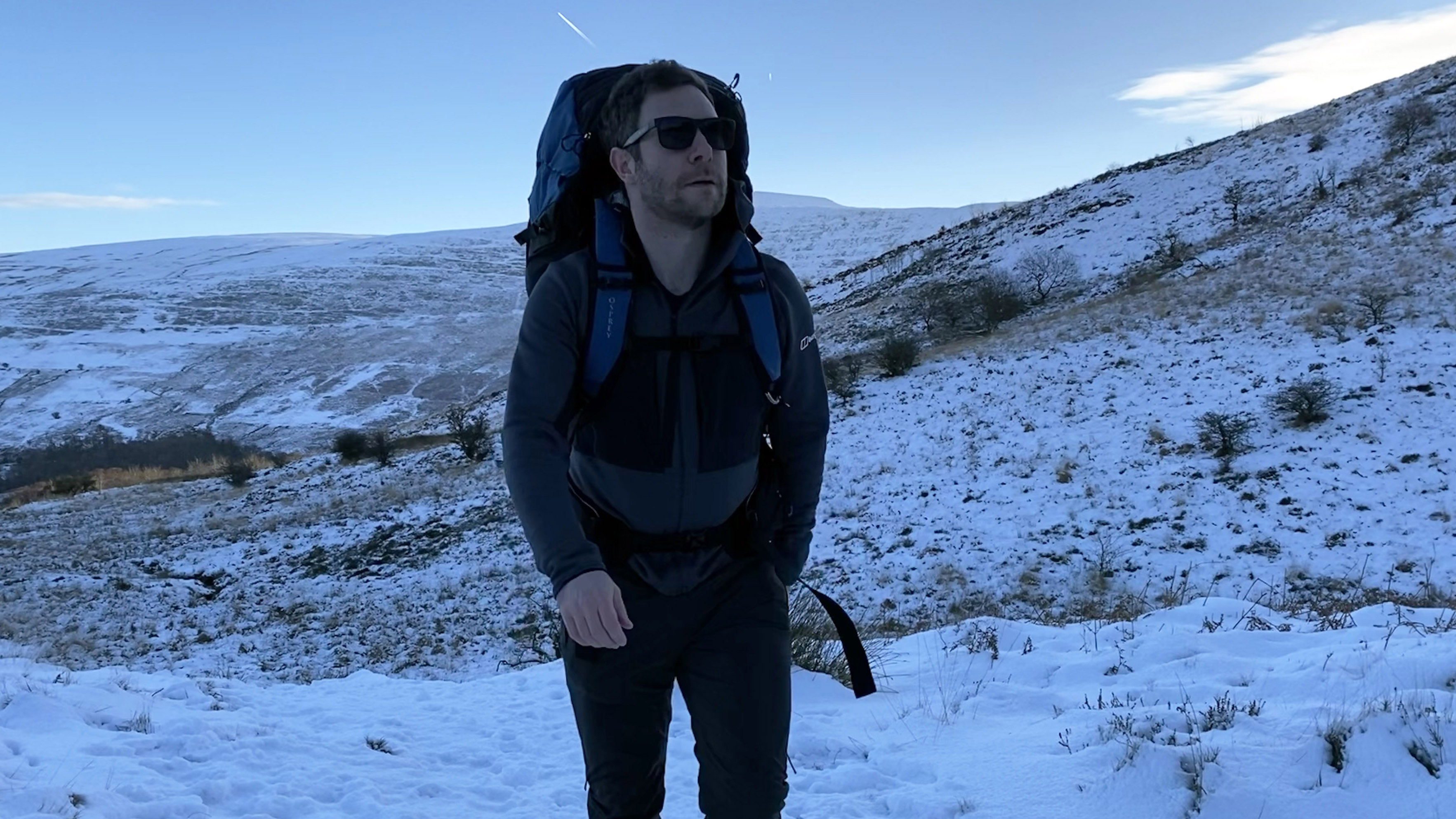
Of course, it’s all too much for standard hiking missions, though you could always leave the main pack at home and just take the detachable daypack for shorter outings. There’s now also the option of the UNLTD Hike Antigravity 32, which combines the design flair and advanced materials of the AirScape but in a much smaller, lighter package. However, for the longer adventures in my life, the AirScape 68 is perfect.
Alex is a freelance adventure writer and mountain leader with an insatiable passion for the mountains. A Cumbrian born and bred, his native English Lake District has a special place in his heart, though he is at least equally happy in North Wales, the Scottish Highlands or the European Alps. Through his hiking, mountaineering, climbing and trail running adventures, Alex aims to inspire others to get outdoors. He's the former President of the London Mountaineering Club, is training to become a winter mountain leader, looking to finally finish bagging all the Wainwright fells of the Lake District and is always keen to head to the 4,000-meter peaks of the Alps. www.alexfoxfield.com
